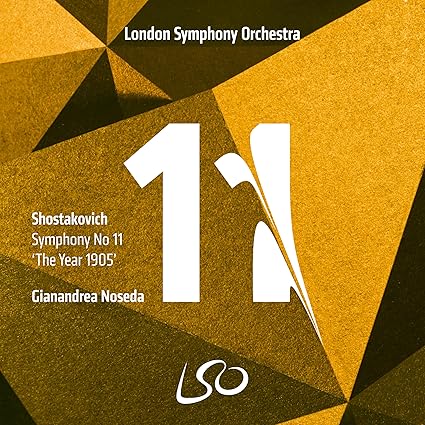

Symphony No. 11 in G Minor, Op. 103, "The Year 1905"
My personal impression and description of this powerful 20th century symphonic statement, which I've used a few times in past reviews, certainly bears repeating so here it is again: This atmospheric work depicts the events during the Russian Revolution of 1905, in particular the bloody massacre of two hundred demonstrators in the Winter Palace Square, on January 9th, 1905. It is again a symphony of extremes. The first movement's main focus depicting the vast and empty Palace Square at night, in the middle of a Russian winter. The music is so bleak and desolate that you can feel the cold on your back, and the eyes of the regime watching over the land. The end of the second movement depicts the demonstration and ensuing massacre with such brute military force, so well scored by its use of heavy percussion playing with martial precision, that you may well feel like you should be taking cover. This is followed by one of Shostakovich's most lyrical slow movements, perfectly scored at the beginning for cellos and violas, which creates a great effect and sets the tone for the whole movement. The final movement starts abruptly, but also re-visits the desolation of the work's beginning, and in the end culminates in a violent outcry underpinned by heavy percussion and bell strokes that leave a lasting impression.
When people are asked to point out their favorite Shostakovich symphony, the majority of them always mention either the 5th or 7th as the most typical and representative of this composer's output. Memorable themes and ear catching tunes, masterful orchestration, and most of all extremely uplifting finales. But what about the core of what lies in the heart and soul of this influential Soviet era composer. It's all laid bare in this subversive recreation of a historical event, the Symphony No. 11 in G Minor, Op. 103, "The Year 1905". The virulence within the music, be it soft or loud, is at times overwhelming.
So far, Gianandrea Noseda's survey of these symphonies has been highly impressive. Noseda has a nose (pun intended) for what lies within the scores. The strong emotions of the Symphony No. 5, the sardonic wit of the Symphony No. 6, the dark and profound disquiet of the Symphony No. 10, it's all brought to the fore under his perceptive eye for detail.
In this 'live' account of the 11th symphony, the dark and icy grip of the regime's hand, clutching the people with it's unbridled power, is what is best portrayed within the "Palace Square" opening movement. And when the violence erupts midway through the "9th of January" second movement, it's obvious that the LSO percussionists are having the time of their lives. All in all, a deeply felt and convincingly expressed reading of this surreptitiously powerful symphony. If you haven't done so yet, I highly recommend you follow the Gianandrea Noseda Shostakovich cycle, if only for the way it captures the true essence of the composer.
Jean-Yves Duperron - March 2025 Second Movement's Violent Outburst